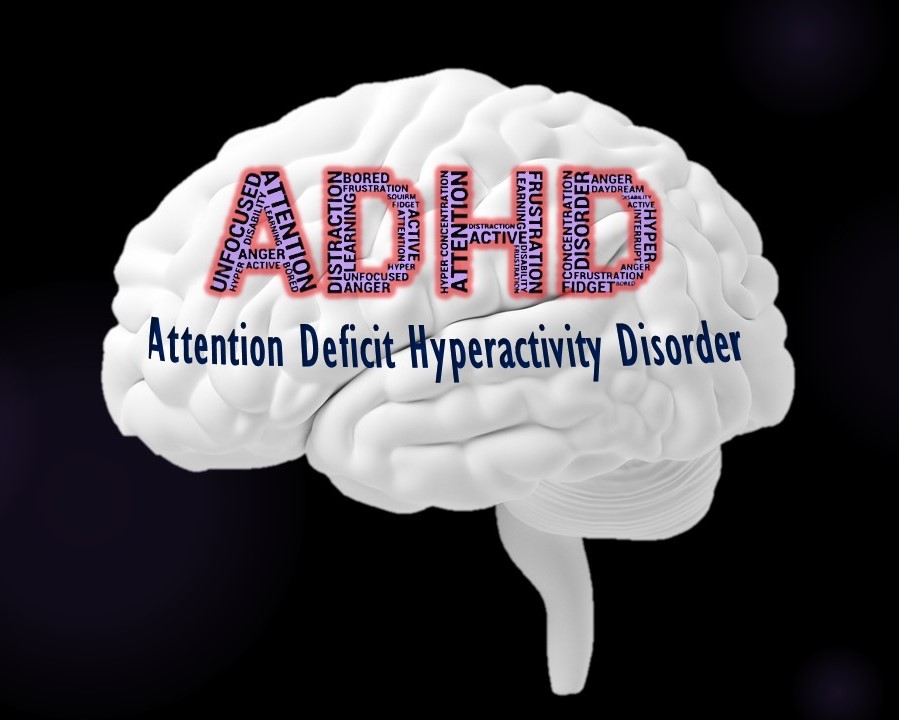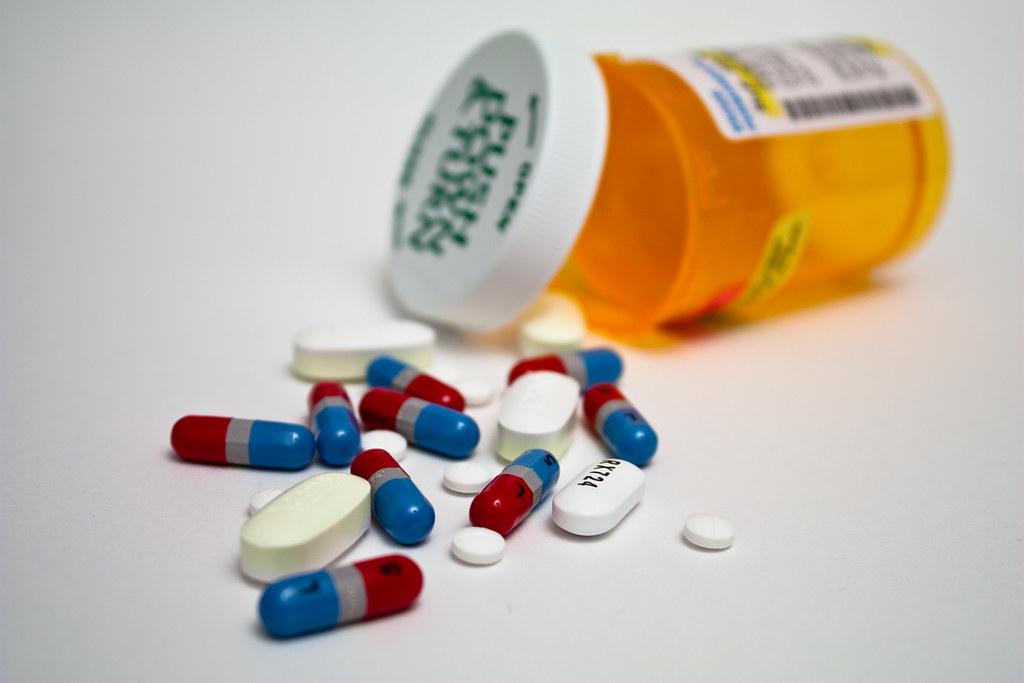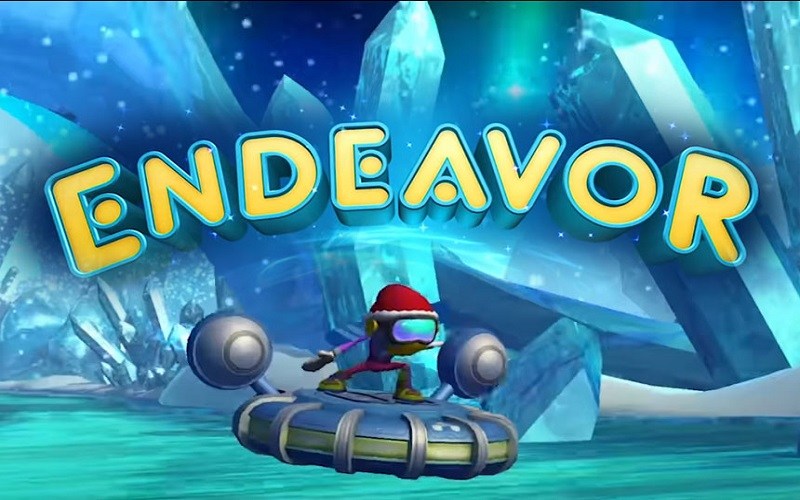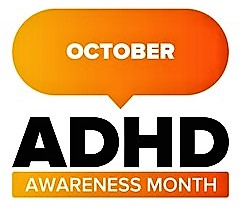
Click here to read this article in Marathi: एडीएचडी (अतिचंचलता)
Attention-deficit/hyperactivity disorder (ADHD) is one of the most common neurodevelopmental disorders of childhood that is characterized by developmentally inappropriate levels of:
- Inattention
- Hyperactivity
- Impulsivity

- It is usually first diagnosed in childhood.
- Although ADHD cannot be cured, it can be successfully managed and some symptoms may improve as the child ages.
- ADHD is more common in males than females (4:1).
- Females with ADHD are more likely to have problems primarily with inattention.
- Commonly seen conditions (coexisting conditions) in people with ADHD are: learning disabilities, anxiety disorder, conduct disorder, depression, tics and Tourette syndrome, oppositional defiant disorder, sleep disorders and substance abuse.

What are the symptoms of ADHD?
Inattention signs:
- Fails to give close attention to details.
- Often has trouble keeping attention on tasks or play activities.
- Does not seem to listen when spoken to directly
- Often does not follow instructions and fails to finish schoolwork.
- Has difficulty organizing tasks and activities
- Avoids, dislikes, or is reluctant to engage sustained mental effort.
- Often loses things
- Is easily distracted
- Frequently forgets or misplaces things
Hyperactivity signs:
- Fidgets with hands or feet or squirms in seat
- Leaves seat in classroom or in other inappropriately
- Runs around or climbs too much inappropriately
- Has difficulty playing quietly
- Is often restless, moving or fidgeting.
- Often talks excessively.
Impulsiveness signs:
- Acts impulsively or without considering the consequence
- Blurts out answerers before questions are completed.
- Has difficulty waiting their turn
- Does not remain seated during class.
- Lacks tact, saying the first thing that comes to mind.
- Interrupts or intrudes on others
Based on the symptoms, there are 3 types of ADHD:
1. Combined Type
Symptoms of hyperactivity, impulsivity and inattention
2. Hyperactive/Impulsive
Symptoms of hyperactivity and impulsivity
3. Predominately Inattentive
Symptoms of inattention
It is normal to have some inattention, unfocused motor activity, and impulsivity, but for people with ADHD, these behaviors:
- are more severe
- occur more often
- interfere with or reduce the quality of how they function socially, at school, or in a job
What causes ADHD?
ADHD is NOT caused by eating too much sugar, watching too much television, parenting, or social and environmental factors such as poverty or family chaos. Of course, these things might make symptoms worse.
The causes of ADHD are genetic and environmental factors.
ADHD usually runs in the families.
Dopamine is a brain chemical (also known as neurotransmitter) which is involved in many important brain functions. It is thought that, people with ADHD have dopamine levels that are different than normal people.
In addition to genetics, scientists are studying other possible causes and risk factors including:
- Brain injury
- Exposure to environmental (e.g., lead) during pregnancy or at a young age
- Alcohol and tobacco use during pregnancy
- Premature delivery
- Low birth weight
Diagnosis of ADHD: There is no single test (like blood test, brain scans or brain wave test) to diagnose ADHD.
Diagnosing ADHD usually includes a checklist for rating ADHD symptoms and taking a history of the child from parents, teachers, and sometimes, the child.
Clinical diagnosis found to be superior than Quotient computerized ADHD testing method and Quantitative EEG (brain wave study) method.
My Child Has Been Diagnosed with ADHD – Now What?
- ADHD can be managed with the right treatment. There are many treatment options, and what works best can depend on the individual child and family.
- In most cases, ADHD is best treated with a combination of behavior therapy and medication.
- For preschool-aged children (4-5 years of age) with ADHD, behavior therapy is recommended as the first line of treatment before medication is tried.
- Child can have 504 plan modifications for school. Some children need IEP (individualized education plan).
- Healthy lifestyle along with behavioral therapy and medications is very important.
-
- Developing healthy eating habits such as eating plenty of fruits, vegetables, and whole grains and choosing lean protein sources. For more information: A Mindful Diet
- Participating in daily physical activity based on age. For more information: Dare to be Fit
- Limiting the amount of daily screen time from TVs, computers, phones, and other electronics. For more information: Screen time: How Much is Too Much?
- Getting the recommended amount of sleep each night based on age. For more information: SHHH…My Brain Is Sleeping
- Some studies have shown that, children taking omega 3 fish oil supplementation showed improvement in their symptoms of ADHD. For more information: Do I Need Fish Oil?
- Some people claim that, Super Brain yoga, which is one type of brain exercise is helpful in children with ADHD. Click here to read more: Super Brain Yoga!
Medication can help children manage their ADHD symptoms in their everyday life and can help them control the behaviors that cause difficulties with family, friends, and at school.
There are different groups of medications:
Stimulants: the best-known and most widely used ADHD medications. Various forms of methylphenidate and amphetamine that come in the form of tablets, capsules, liquids and skin patches. They are fast acting medications. It might seem odd to take stimulants for hyperactivity. But stimulants work by boosting your brain’s levels of neurotransmitters (like dopamine), which could help increase your focus and attention.
Non-stimulants: Strattera (atomoxetine), Intuniv (guanfacine), and Kapvay (clonidine). They do not work as quickly as stimulants, but their effect can last up to 24 hours.
In April 2021, the Food and Drug Administration (FDA) approved Qelbree (viloxazine extended-release capsules), a non-stimulant medication for children aged 6 to 17 years.

Medications can affect children differently and can have side effects such as decreased appetite or sleep problems. One child may respond well to one medication, but not to another.
It is important for parents to work with their child’s healthcare providers to find the medication that works best for their child.
 Video game for ADHD: EndeavorRx is the first video game approved on June 15, 2020 by FDA for children with ADHD who mainly have attentional problem. Doctors can prescribe the iPhone and iPad game for kids between ages 8 and 12. EndeavorRx should be used as part of a therapeutic program, is not a stand-alone therapeutic and is not a substitute for ADHD medication.
Video game for ADHD: EndeavorRx is the first video game approved on June 15, 2020 by FDA for children with ADHD who mainly have attentional problem. Doctors can prescribe the iPhone and iPad game for kids between ages 8 and 12. EndeavorRx should be used as part of a therapeutic program, is not a stand-alone therapeutic and is not a substitute for ADHD medication.
It is recommended EndeavorRx should be used for approximately 25 minutes per day, 5 days per week, for 4 weeks, or as recommended by your child’s healthcare professional. Then treatment pause for one month and a subsequent second 4-week treatment period. It is available in 3-month treatment periods.
The game challenges the child at a specific and consistent level of difficulty throughout the game. In addition, the multitasking rules get more complex as the game progresses. As long as the child is playing consistently and trying his/her best, the child is engaging with the treatment as intended.
EndeavorRx associated adverse events included frustration (6.1%), headache (1.3%), dizziness (0.6%), emotional reaction (0.4%), nausea (0.4%), and aggression (0.2%). If your child experiences a seizure, stop the treatment and contact your child’s healthcare provider. EndeavorRx may not be appropriate for patients with photo-sensitive epilepsy, color blindness, or physical limitations that restrict use of a mobile device.
Left untreated1, ADHD can have serious consequences.
- A child may fall behind in school, encounter difficulties in friendships, and have conflicts with parents
- Adolescents with ADHD are more likely to have motor vehicle crashes.
- Children with ADHD may be at increased risk of engaging in substance use during adolescence and adulthood.
- Adults with ADHD may have poor time management skills and trouble with multitasking, become restless with downtime, and avoid activities that require sustained concentration.

Tips for Parents2
The following are suggestions that may help with your child’s behavior:
- Create a routine. Try to follow the same schedule every day, from wake-up time to bedtime.
- Get organized. Encourage your child to put schoolbags, clothing, and toys in the same place every day so that they will be less likely to lose them.
- Manage distractions. Turn off the TV, limit noise, and provide a clean workspace when your child is doing homework. Some children with ADHD learn well if they are moving or listening to background music. Watch your child and see what works.
- Limit choices. To help your child not feel overwhelmed or overstimulated, offer choices with only a few options. For example, have them choose between this outfit or that one, this meal or that one, or this toy or that one.
- Be clear and specific when you talk with your child. Let your child know you are listening by describing what you heard them say. Use clear, brief directions when they need to do something.
- Help your child plan. Break down complicated tasks into simpler, shorter steps. For long tasks, starting early and taking breaks may help limit stress.
- Use goals and praise or other rewards. Use a chart to list goals and track positive behaviors, then let your child know they have done well by telling them or by rewarding their efforts in other ways. Be sure the goals are realistic—small steps are important!
- Discipline effectively. Instead of scolding, yelling, or spanking, use effective directions, time-outs or removal of privileges as consequences for inappropriate behavior.
- Create positive opportunities. Children with ADHD may find certain situations stressful. Finding out and encouraging what your child does well—whether it’s school, sports, art, music, or play—can help create positive experiences.
- Provide a healthy lifestyle. Nutritious food, lots of physical activity, and sufficient sleep are important; they can help keep ADHD symptoms from getting worse.
 References:
References:
1. https://www.fda.gov/consumers/consumer-updates/dealing-adhd-what-you-need-know
2. https://www.cdc.gov/ncbddd/adhd/treatment.html

खूप छान माहितीपूर्ण लेख
Thank you.
Fantabulous dear savi
Thank you.
Very informative and reassuring article 👍
Thank you, Divya 🙂
Good article Dr. Savitra
Thank you 🙂